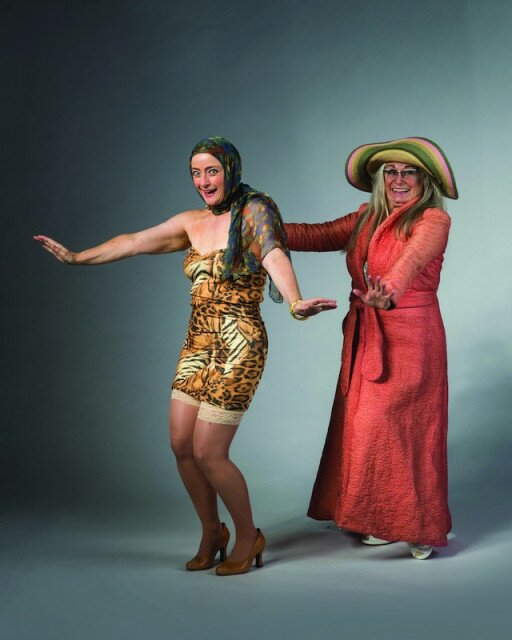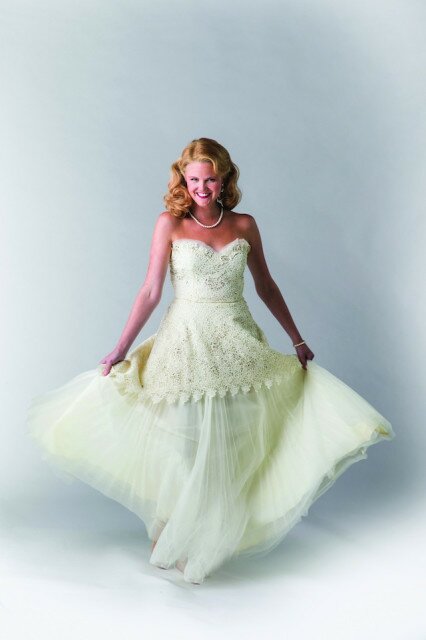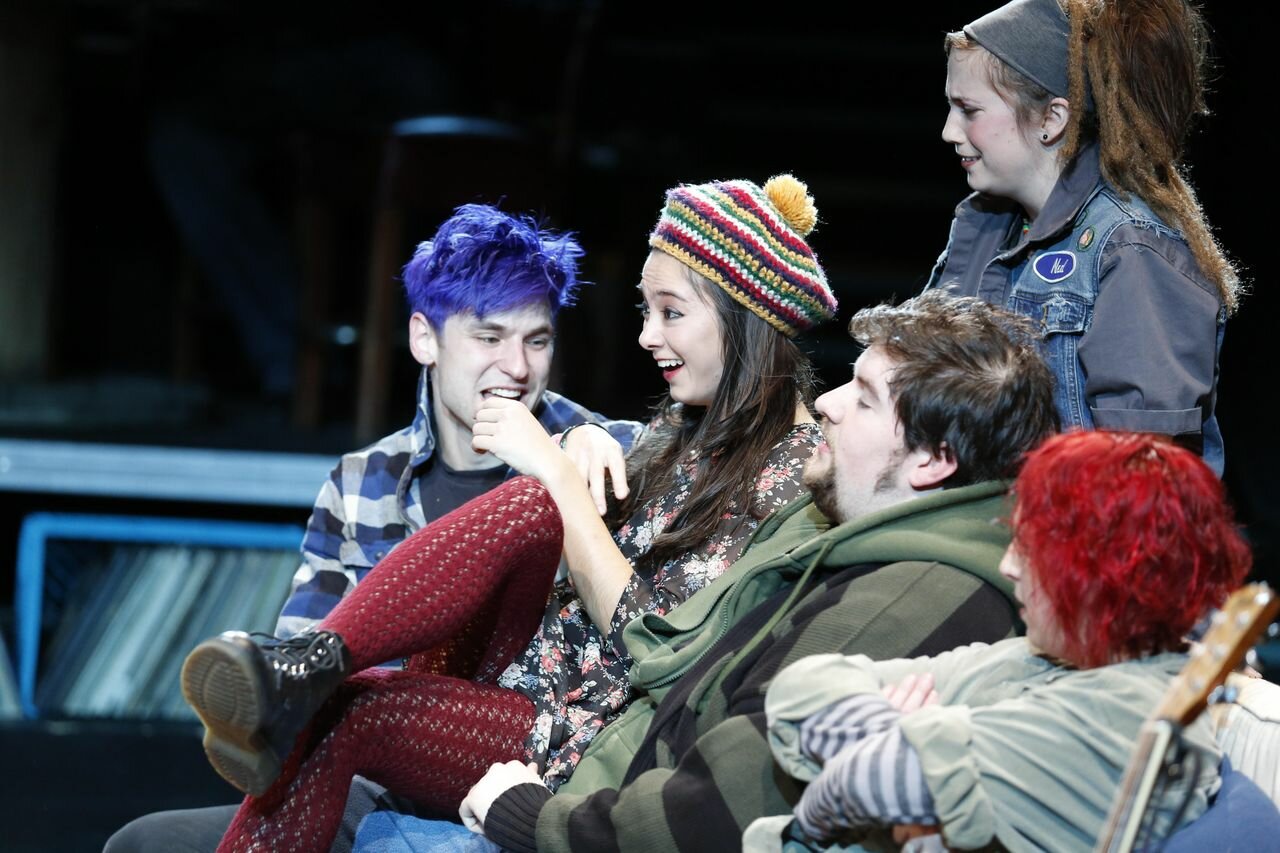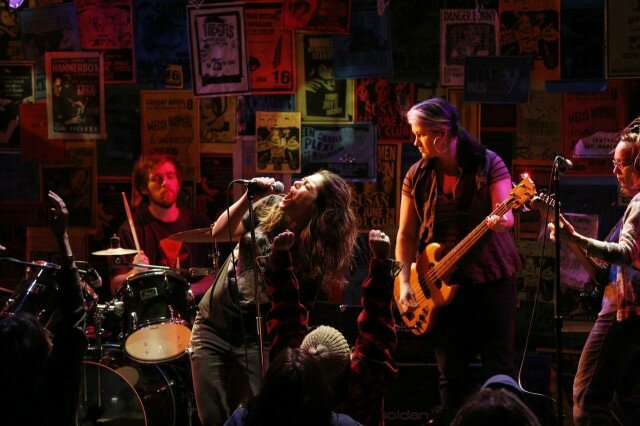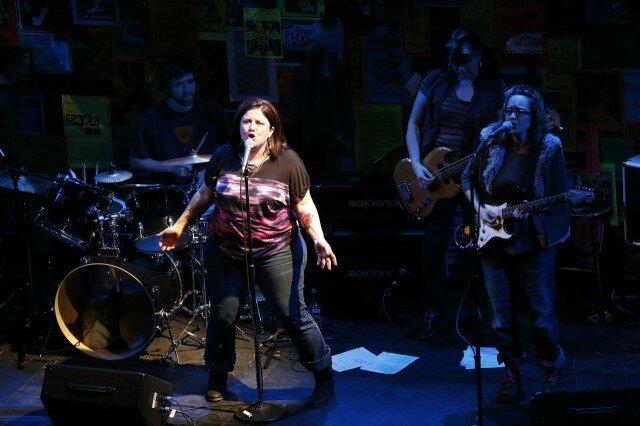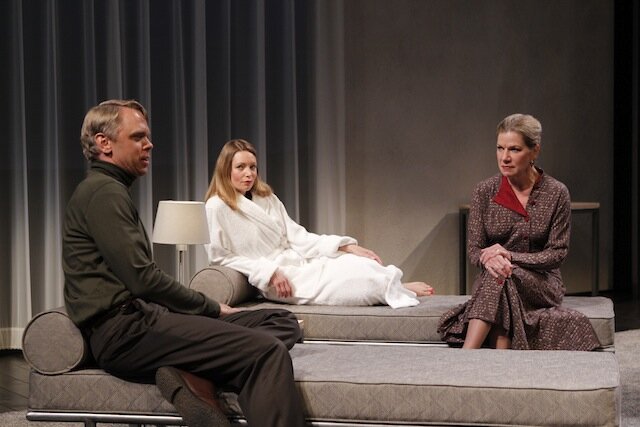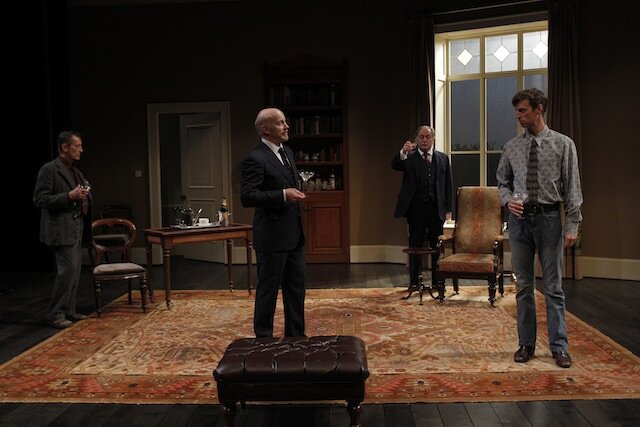With Grey Gardens: The Musical at ACT (a co-production with 5th Avenue Theatre on an extended run through June 2), you really get two musicals in one: one a dated throwback, one a “staunch women” tour-de-force. Happily, the latter more than makes up for the former. In the end, for all its cult trappings, it’s a show about an enduring mother-daughter bond, one that survived both destitution and the kind of eccentricity that borders on involuntary commitment. People stroll out the theatre deep in discussion.
Act One is set in 1941, when “Little” Edie Bouvier Beale (Jessica Skerritt) was a ravishing twenty-three-year-old fending off marriage proposals (she said later), and imagines the clan at Grey Gardens preparing their Hamptons mansion for an engagement party that night starring Joe Kennedy, Jr. (Matt Owen). Her main concern is preventing her mother Edith (“Big” Edie) Bouvier Beale (Patti Cohenour) from turning it into an occasion for an informal song recital.
Now, there’s no record of this engagement, outside of the later recollections of Little Edie; the whole act exists because composer Scott Frankel wanted to contrast “the halcyon days of the house and those women in their heyday,” with the Grey Gardens discovered by the Maysles brothers in their documentary. Except the contrast generated between that completely fictionalized event with Act Two, which quotes scene after scene from the Maysles documentary, suggests only that Doug Wright’s imagination alone is not sufficient to capture the stunning reality of the Grey Gardens folie à deux.
So much that’s humdrum musical-plot pastiche surfaces in Act One: the foreshadowing (slash fore-billboarding) of the song “The Girl Who Has Everything,” the ticking clock buried in “The Five-Fifteen” train song, the ensemble “Marry Well” led by “Major” Bouvier (Allen Fitzpatrick), complete with a Von-Trapp-style procession (musical numbers staged by Noah Racey). There’s even a drunk, gay pianist, George Gould Strong (Mark Anders), who has to try to get a laugh from a joke about a florist who can’t find pansies.
It’s a lot of vamping just to deliver an ambiguous “truth” that (as Little Edie complains later), Big Edie could chase off one of her suitors in 15 minutes. As Cohenour portrays the moment, it’s a blend of sabotaging neediness and a sort of test — to see if a suitor can be frightened off by the prospect of a willful wife. Then Act Two — and the musical, really — begins. Here are the two women who so entrance as they walk an unsteady line between free-spiritedness and clinical neurosis.
Paradoxically, with dynamo Cohenour as Little Edie and an utterly fearless, gutsy Suzy Hunt as Big Edie, trapped together in Grey Gardens by dependency, inertia, and mental decline, the musical starts to move (including the hydraulic-assist set by Matthew Smucker, which represents a number of rooms, upstairs and down, and allows the space to feel mansion-like). Director Kurt Beattie seems in his element here (1973, in fact), as everything dated and actorly about Act One vanishes: Cohenour and Hunt yell to each down halls, trading half-crazed, half-brilliant barbs, and Michael Korie’s songwriting gets wonderfully loopy yet lucidly precise.
Little Edie models her costumes (designer Catherine Hunt has managed to recreate some Edie-like gems) to “The Revolutionary Costume for Today” — and dances with a flag in a little George M. Cohan moment. Big Edie croons “Jerry Likes My Corn” to handykid Jerry (Owen again, in a role he can sink his teeth into), infuriating Little Edie, who fumes darkly about Jerry “moving in.” Little Edie takes you on a tour of her home décor project of treasured items (“Around the World”) and Frankel and Korie strike gold with her lament “Another Winter in a Summer Town,” sung under fading autumnal lighting from Mary Louise Geiger.
Ekello J. Harrid, Jr., doesn’t have all that much to say as Brooks (Sr. and Jr.), but his understated reactions to the goings-on are priceless, whether he’s casting an eye up at the “privet” or registering a door’s slam.
Likely due to the limitations of space, the small band (Chris DiStefano, piano/conductor; Dane Andersen, woodwinds; Virginia Dziekonski/Emily Schaefer, cello; Chris Monroe, percussion) plays offstage with the music piped in — the canned sound isn’t kind to Frankels compositions, which are otherwise assured and inventive. Given all the dropping out of mic amplification, ACT might consider doing without; the actors seem able to handle filling the space on their own.
